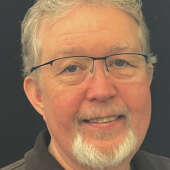Conflict in the jungle: The Vietnam War, Part 1

A Marine helicopter in action during the Vietnam War. Red Clifton Collection.
Submitted
In 1919, a young Vietnamese man along with some friends drafted a document of civil rights for the Vietnamese people living under French colonial rule. They mailed the letter to the leaders at the Versailles peace talks. It was ignored. Ho Chi Minh, returned to Vietnam in 1941, after traveling the world between 1919 and 1940 studying politics, especially Russian communism and later Chinese communism, determined to oust the French from Indochina. Ho came to the United States in 1912 interested in American democracy. He would make his way to Britain and eventually France, where he was introduced to socialistic ideology.
In May 1941, Pac Bo and Ho Chi Minh formed a coalition under the name Viet Minh Front to create the Democratic Republic of Vietnam. In 1945, the Vietnamese, with the help of the Office of Strategic Services (OSS), later the Central Intelligence Agency (CIA), pushed the Japanese out of their country. By 1946, tension between the Viet Minh Front and France exploded into war. In 1954, the Viet Minh defeated the French at Den Ben Phu and brought an end to French colonial rule in Indochina.
President Harry S. Truman announced the Truman Doctrine in 1947, pledging U.S. support to any country trying to resist any outside force on its country. Russia and China recognized the democratic government in North Vietnam in January 1950, and in February, the U.S. recognized the former emperor of Vietnam, Bao Dai, as the leader of South Vietnam.
War had erupted in Korea also in 1950, with China and Russia backing a communist regime in North Korea. The U.S. viewed both these events as attempts to expand communism, and President Dwight Eisenhower sent 900 advisers to South Vietnam. The Geneva Conference of 1954 divided Vietnam at the 17th parallel with a 300-day transition period for the country to reach a unified Vietnam.
When John F. Kennedy became president in 1960, he continued the anti-communist programs of Truman and Eisenhower. Between 1959 and 1965, the People’s Army of Vietnam (PAV, North Vietnam) connected century-old trails together to form what the U.S. termed the Ho Chi Minh Trail, to run supplies, troops and vehicles to their allies in Laos, Cambodia and South Vietnam. This trail would play a major role in the Vietnam War.
After Kennedy’s assassination in 1963, Vice President Lyndon Johnson continued U.S. support to South Vietnam. In 1964, an incident in the Gulf of Tonkin drew the U.S. deeper into the war in Vietnam. North Vietnamese torpedo boats opened fire on the USS Maddox, which returned fire. There were no American casualties; four North Vietnamese died. And three of the torpedo boats were damaged. Congress gave the president the power to use whatever force necessary to repel attacks by the North Vietnamese. Johnson immediately began air strikes in North Vietnam, specifically the Ho Chi Minh Trail, and sent 3,500 more troops to Vietnam.
The year 1968 became a pivotal year in the Vietnam War, both at home and abroad. The U.S. had 500,000 troops in Vietnam. In January, the North Vietnamese launched the Tet Offensive, named after the Vietnamese New Year. The three offensives launched by the North were a military failure. U.S. forces lost 2,100, while the Viet Cong (fighting forces for the North) lost 1.1 million soldiers and failed to get the communists in the South to come over to their side. However, the offensive boosted morale in the North, but morale began a downward spiral in U.S. troops as well as in the States. Gen. William Westmoreland, in late 1967, had told the American public our troops were making progress and it would continue in 1968. The misinformation about Tet was on the scale of Pearl Harbor in 1941. As a result, Westmoreland resigned, being replaced by Creighton Abrams, his deputy.
Between 1968 and 1972, the U. S. military saw increased use of drugs and enrollment in the ROTC declined by 83%. Fewer than 3% of enlisted men chose infantry positions. Between 1961 and 1971, defoliants were used in Vietnam. One, known as Agent Orange, would come to haunt many veterans with catastrophic illnesses after the war.
At home, civil unrest and mistrust, which began before Westmoreland’s dismissal, escalated after the Tet Offensive. Vietnam became the first war in history to be broadcast on television. Battles were broadcast shortly after they had been fought, leading people to believe they were watching it live. It also helped add to the division about the war in the U.S. Civil rights leader and anti-war activist Martin Luther King Jr. was assassinated in April 1968. President Johnson, seeing his ratings drop and no clear end to the war, announced he would not seek his party’s nomination for a second term. Robert F. Kennedy, brother of the late president and leading Democratic Party runner for president, was assassinated in June. At the Democratic National Convention in Chicago that August, Hubert Humphrey received his party’s nomination for president, while riots were going on outside the convention. The Republican candidate, Richard M. Nixon, won the race for president, with a promise to the American people to end the war in Vietnam. Resentment of the war both at home and by American soldiers continued to grow.



























Respond to this story
Posting a comment requires a subscription.